 1991 Nissan Sunny III (N14) Dimensions, Size & Specs
1991 Nissan Sunny III (N14) Dimensions, Size & SpecsMeasurements of the 1991 Nissan Sunny III, engineered for optimal performance and comfort
| Dimensions | |
|---|---|
| Length: | 4230 mm166.5 in13.9 ft |
| Width: | 1690 mm66.5 in5.5 ft |
| Height: | 1395 mm54.9 in4.6 ft |
| Trunk Capacity: | 440 liter15.5 cu ft |
| Weight Specifications | |
| Curb Weight: | 920-1100 kg2028-2425 lbs |
| Maximal permitted Weight: | 1545-1595 kg3406-3516 lbs |
| Tire Specifications | |
| Rims Sizes: | 13-inch rims:
|
| Tire Sizes: |
|
The Nissan Sunny III (N14) is a compact sedan produced from 1990 to 1995, representing the third generation of the popular Nissan Sunny line. Introduced in model year 1991, this generation combines practical dimensions with efficient design, making it a favored choice for city driving and small family transportation. The Sunny III measures 4230 mm (166.5 inches) in length, 1690 mm (66.5 inches) in width, and stands 1395 mm (54.9 inches) tall, positioning it comfortably within the compact sedan segment. With a curb weight ranging from 920 to 1100 kg (2030 to 2425 pounds), this vehicle balances lightweight construction with structural integrity, contributing to fuel efficiency and maneuverability. It can carry a maximum weight between 1545 and 1595 kg (3407 to 3517 pounds), ensuring reliable performance under typical passenger and cargo loads. The luggage capacity of the Sunny III is 440 liters (15.5 cubic feet), offering ample space for everyday errands and travel needs. The vehicle rides on rims sized between 5J x 13 and 5J x 14, and supports a wide variety of tire sizes including 155/80 R13, 175/70 R13, 175/70 R14, 175/65 R14, 195/70 R13, 185/60 R14, and 165/80 R13. This diversity in tire options allows for versatility in driving conditions and personal preferences. The Nissan Sunny III (N14) effectively combines compact exterior dimensions with a practical interior and cargo capacity, making it a dependable and efficient choice within its segment during the early 1990s.
Discover the standout features that make the 1991 Nissan Sunny III a leader in its class
Have a question? Please check our knowledgebase first.
The Nissan Sunny III (N14), produced from 1990 to 1995, features a length of 4230 mm (approximately 166.5 inches), a width of 1690 mm (about 66.5 inches), and a height of 1395 mm (roughly 54.9 inches). These compact yet practical dimensions contribute to its ease of maneuverability in urban environments while providing sufficient interior space for passengers and cargo.
The curb weight of the Nissan Sunny III (N14) ranges from 920 to 1100 kilograms (approximately 2028 to 2425 pounds). This relatively light weight aids in responsive handling and contributes to decent fuel efficiency for its time. The lower weight also means the vehicle feels more agile in city driving conditions, yet it maintains enough mass to provide a stable and comfortable ride.
The maximum permissible weight of the Nissan Sunny III (N14) ranges between 1545 and 1595 kilograms (about 3407 to 3516 pounds). This figure includes the vehicle's curb weight plus passengers, cargo, and any additional loads. Knowing the maximum weight is crucial for safety and performance because it ensures the car is not overloaded, which could negatively affect braking, handling, and suspension endurance.
The Nissan Sunny III (N14) offers a luggage compartment capacity of 440 liters (approximately 15.5 cubic feet). This capacity is quite practical for a compact sedan of its era, enabling users to carry a fair amount of groceries, luggage, or equipment. Compared to similar models like the Toyota Corolla or Honda Civic of the early '90s, the Sunny's trunk size is competitive, providing decent storage space without compromising passenger room.
The Nissan Sunny III (N14) comes with rims sized 5J x 13 or 14 inches. Its tire sizes range across several options including 155/80 R13, 175/70 R13, 175/70 R14, 175/65 R14, 195/70 R13, 185/60 R14, and 165/80 R13. These diverse tire options allowed for a balance between comfort, road grip, and fuel economy. Smaller tires generally offer a smoother ride with better fuel efficiency, while slightly larger and wider tires improve traction and handling.
Yes, the Nissan Sunny III (N14) fits comfortably into a standard garage due to its compact dimensions—4230 mm (166.5 inches) in length, 1690 mm (66.5 inches) in width, and 1395 mm (54.9 inches) in height. Standard residential garage dimensions typically accommodate vehicles up to around 6 meters (19.7 feet) long and 2.4 meters (7.9 feet) wide, so the Sunny's size allows for easy parking and door clearance, making it an excellent choice for urban environments where garage space can be limited.
Compared to its predecessor, the Nissan Sunny II (N13), the Sunny III (N14) shows modest increases in size, most noticeably in length and width, enhancing interior space and passenger comfort. While the N13 had a length closer to 4100 mm (161.4 inches), the N14 stretches to 4230 mm (166.5 inches). The width also saw a slight increase from around 1650 mm (65 inches) to 1690 mm (66.5 inches). These dimensional upgrades resulted in a more spacious cabin and larger trunk, aligning with evolving consumer preferences for compact sedans with improved practicality.
When compared to contemporaries like the Toyota Corolla E90 or the Honda Civic fifth generation, the Nissan Sunny III (N14) holds a competitive size profile. Its length of 4230 mm (166.5 inches) and width of 1690 mm (66.5 inches) make it slightly larger than the Corolla E90, which measured around 4240 mm (166.9 inches) length but narrower at approximately 1660 mm (65.4 inches) width. The Honda Civic from the same period tended to be a bit shorter and narrower, emphasizing compactness. The Sunny's dimensions thus strike a balance, offering ample passenger space and trunk capacity while maintaining the maneuverability expected in a compact sedan.
The Nissan Sunny III (N14) generation, produced from 1990 to 1995, is recognized for its conservative yet practical design, reliable performance, and economical operation. Available primarily as a sedan, it catered to everyday driving needs with a focus on fuel efficiency, comfort, and ease of maintenance. Its engine options and mechanical components favored durability and affordability, making it popular among budget-conscious buyers. Additionally, the N14 generation included slight styling updates over previous models, improved safety features, and a generally smooth driving experience for its class.
Yes, the Nissan Sunny III (N14) offers a refined driving experience compared to earlier generations like the N13. Thanks to tweaks in suspension tuning and the slightly increased size and curb weight, the N14 provides improved ride comfort and stability. The car's light weight combined with a balanced chassis enables agile handling suitable for city and suburban driving. Furthermore, the availability of varied tire sizes allowed owners to prioritize ride comfort or sportiness as desired. These changes contributed to a versatile vehicle that retained the economical benefits of its predecessors while enhancing everyday drivability.
Discover similar sized cars.
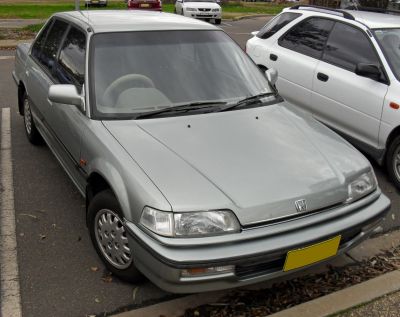
| Production: | 1987-1991 |
|---|---|
| Model Year: | 1987 |
| Length: | 4230 mm166.5 in |
| Width: | 1690 mm66.5 in |
| Height: | 1360-1390 mm53.5-54.7 in |
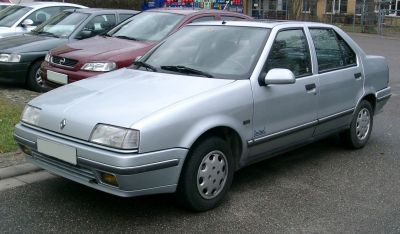
| Production: | 1989-1992 |
|---|---|
| Model Year: | 1989 |
| Length: | 4262 mm167.8 in |
| Width: | 1694 mm66.7 in |
| Height: | 1412 mm55.6 in |
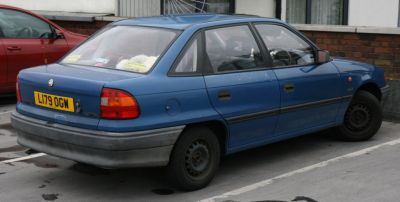
| Production: | 1991-1998 |
|---|---|
| Model Year: | 1991 |
| Length: | 4239 mm166.9 in |
| Width: | 1689 mm66.5 in |
| Height: | 1389-1410 mm54.7-55.5 in |
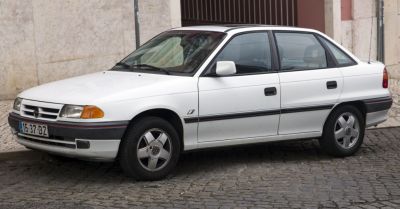
| Production: | 1991-1994 |
|---|---|
| Model Year: | 1992 |
| Length: | 4239 mm166.9 in |
| Width: | 1795 mm70.7 in |
| Height: | 1410 mm55.5 in |

| Production: | 1992-1996 |
|---|---|
| Model Year: | 1992 |
| Length: | 4248 mm167.2 in |
| Width: | 1696 mm66.8 in |
| Height: | 1417 mm55.8 in |
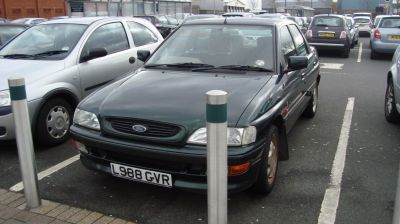
| Production: | 1992-1995 |
|---|---|
| Model Year: | 1993 |
| Length: | 4229 mm166.5 in |
| Width: | 1690 mm66.5 in |
| Height: | 1397 mm55.0 in |
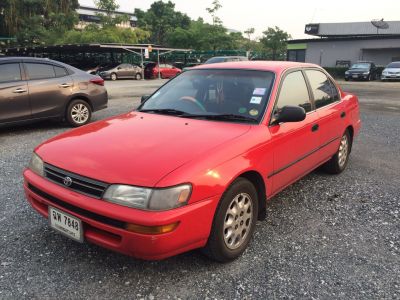
| Production: | 1992-1997 |
|---|---|
| Model Year: | 1993 |
| Length: | 4270 mm168.1 in |
| Width: | 1685 mm66.3 in |
| Height: | 1380 mm54.3 in |

| Production: | 1994-1997 |
|---|---|
| Model Year: | 1994 |
| Length: | 4232-4239 mm166.6-166.9 in |
| Width: | 1689 mm66.5 in |
| Height: | 1386 mm54.6 in |
